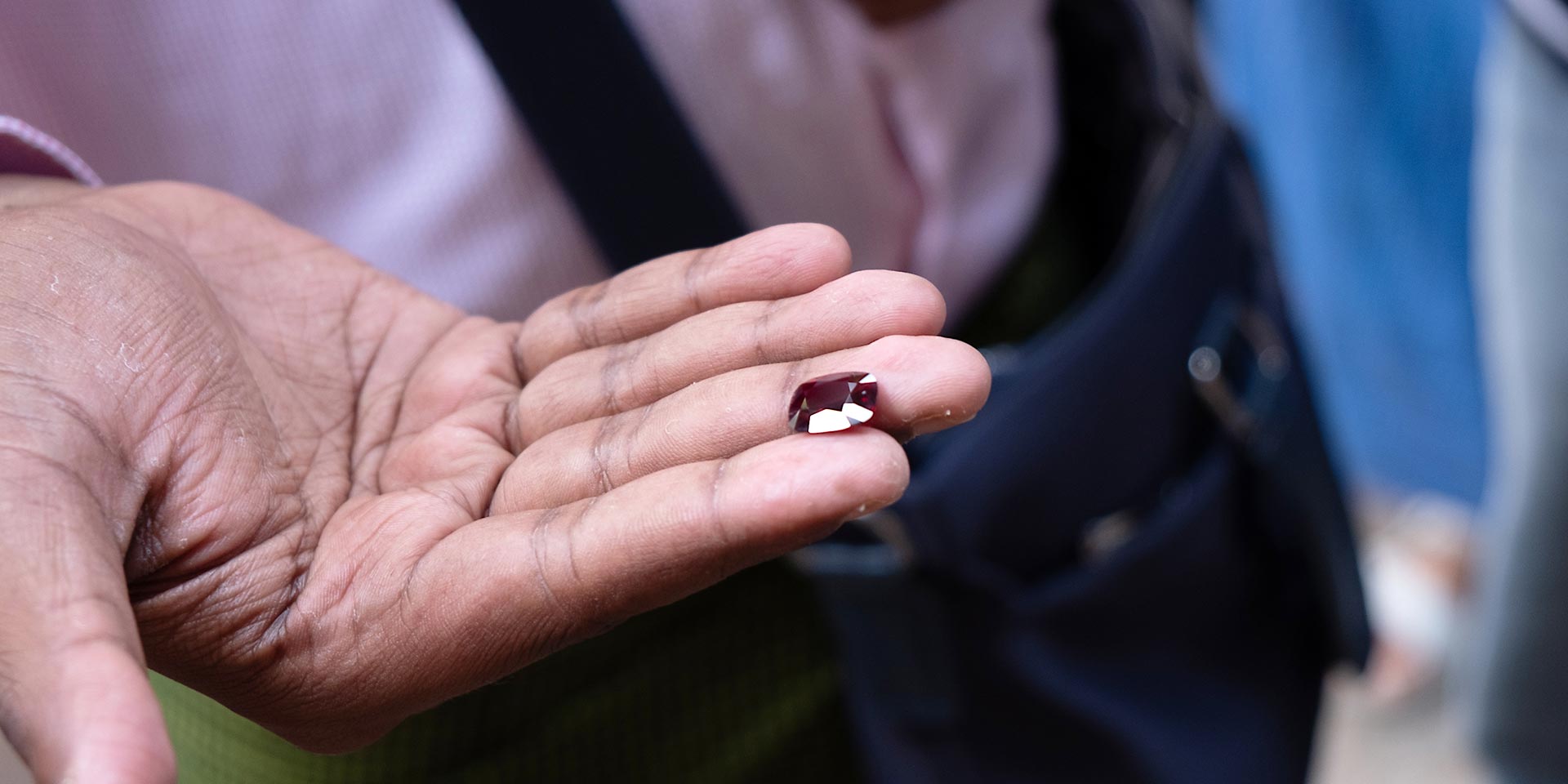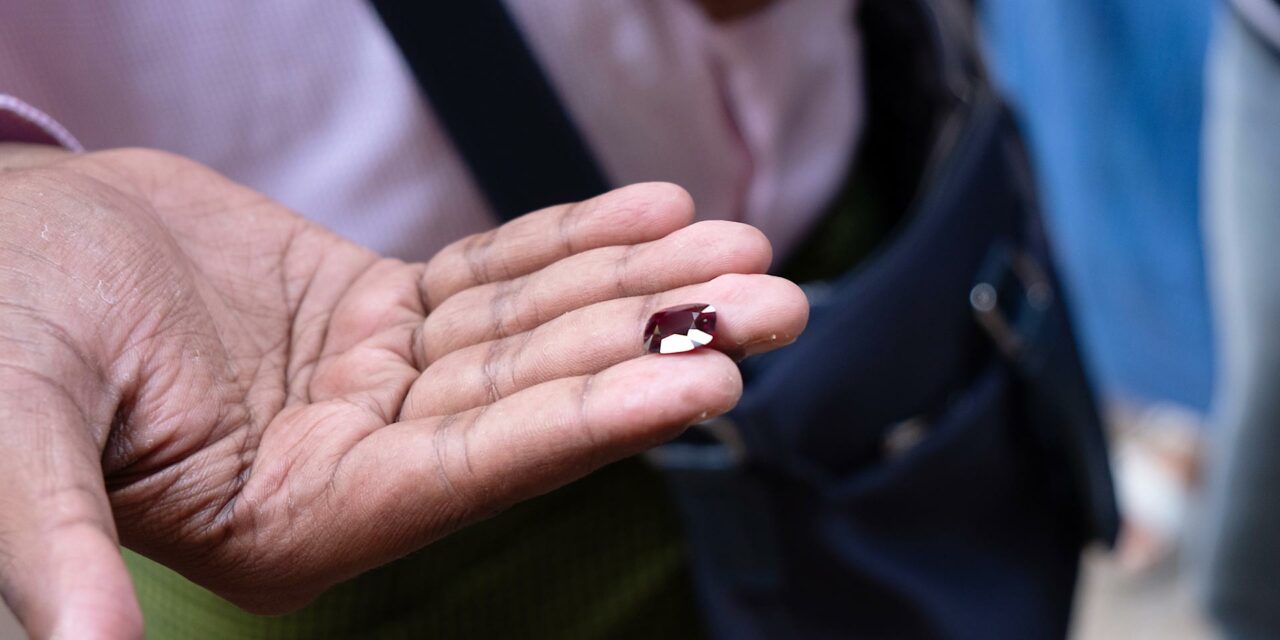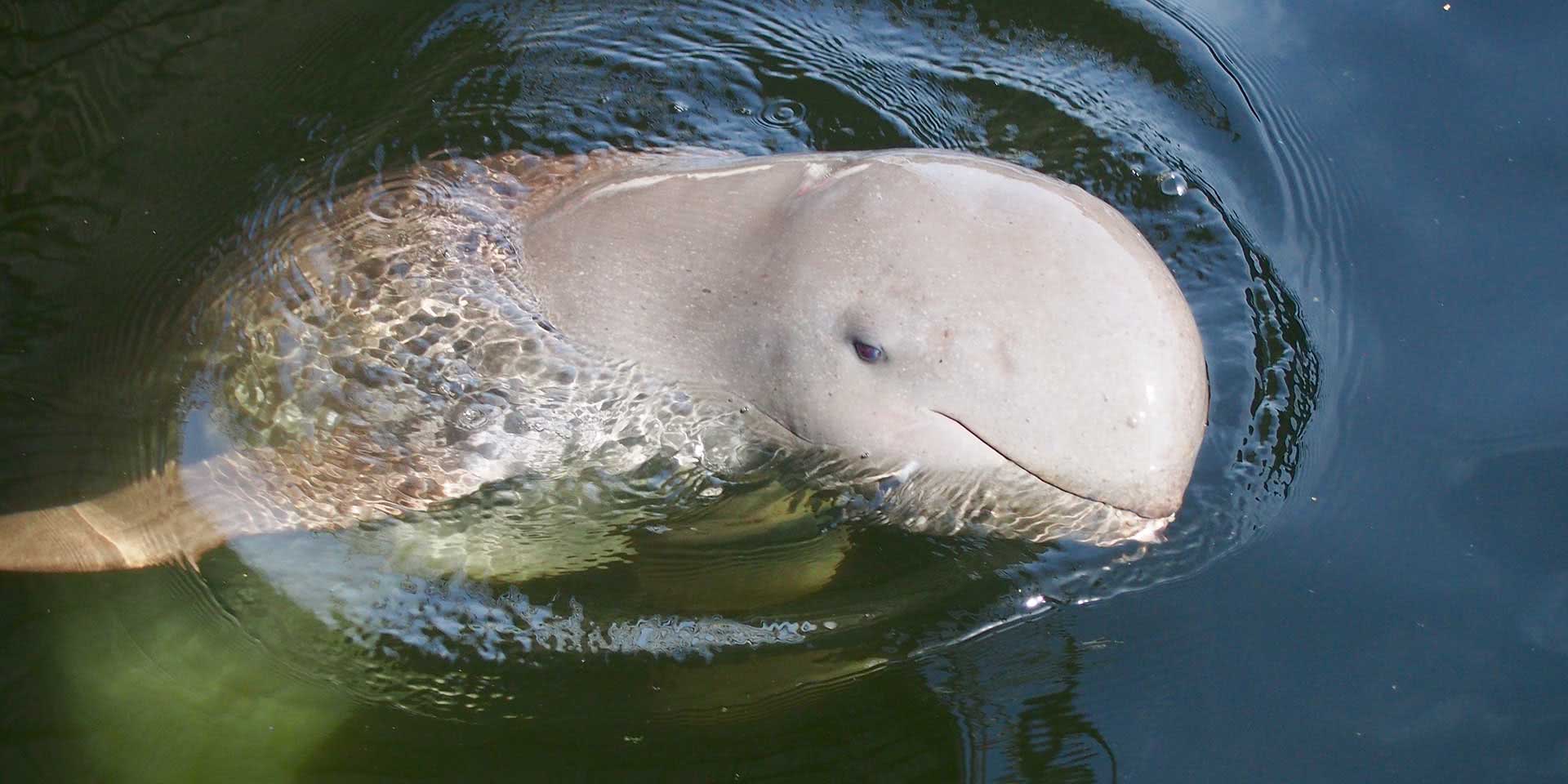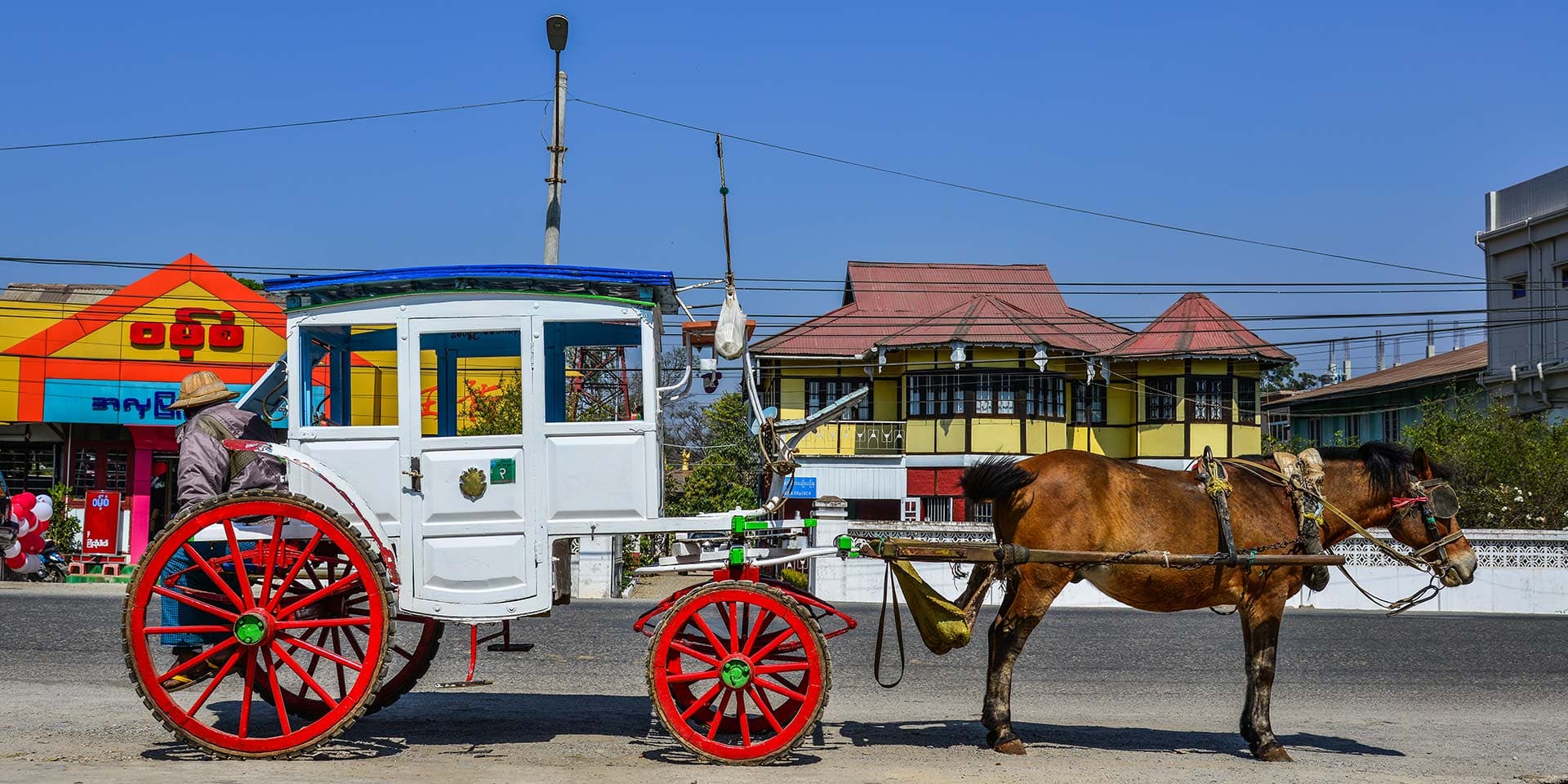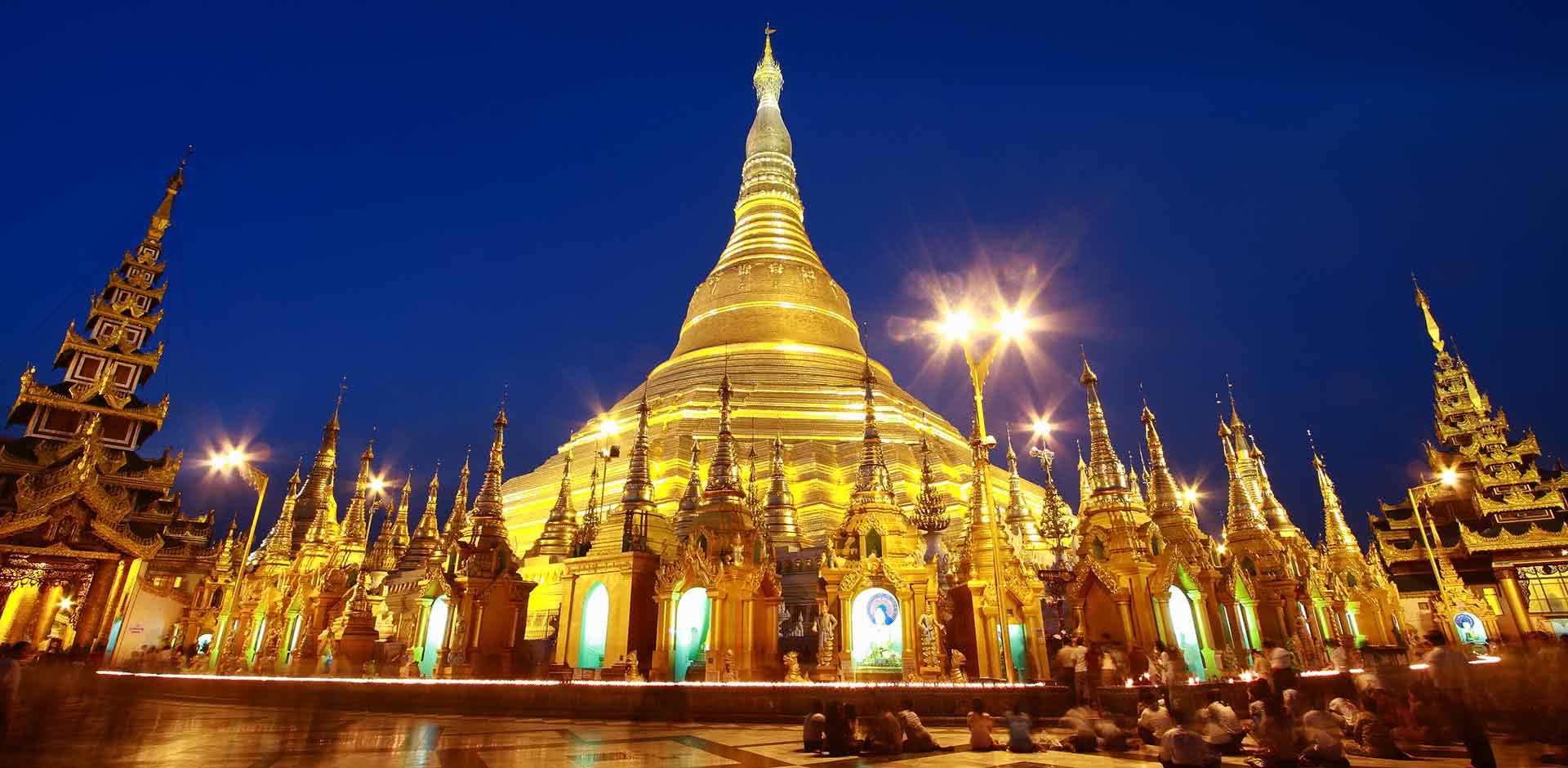“Where is your face-mask?” Batsa asks me. “Where is yours,” I retort. He rummages in his side-bag and produces one, still wrapped in plastic. “Coronavirus hasn’t got to Myanmar yet, it’s fine,” he protests.
Batsa Thapa is one of hundreds of gem traders milling around the pavements of Shwe Bon Than Road in downtown Yangon. This is the spot where the Yangon-based traders buy from middle-men who bring gems from the northern parts of Myanmar. Raj, a broker, arrives with a red-coloured spinel. The stone is passed around Batsa and his friends, and examined against the morning light for cracks, trapped polishing dust or impurities. A telescopic looking-glass is produced. Batsa offers half the asking price and Raj swaggers off to relay the message.
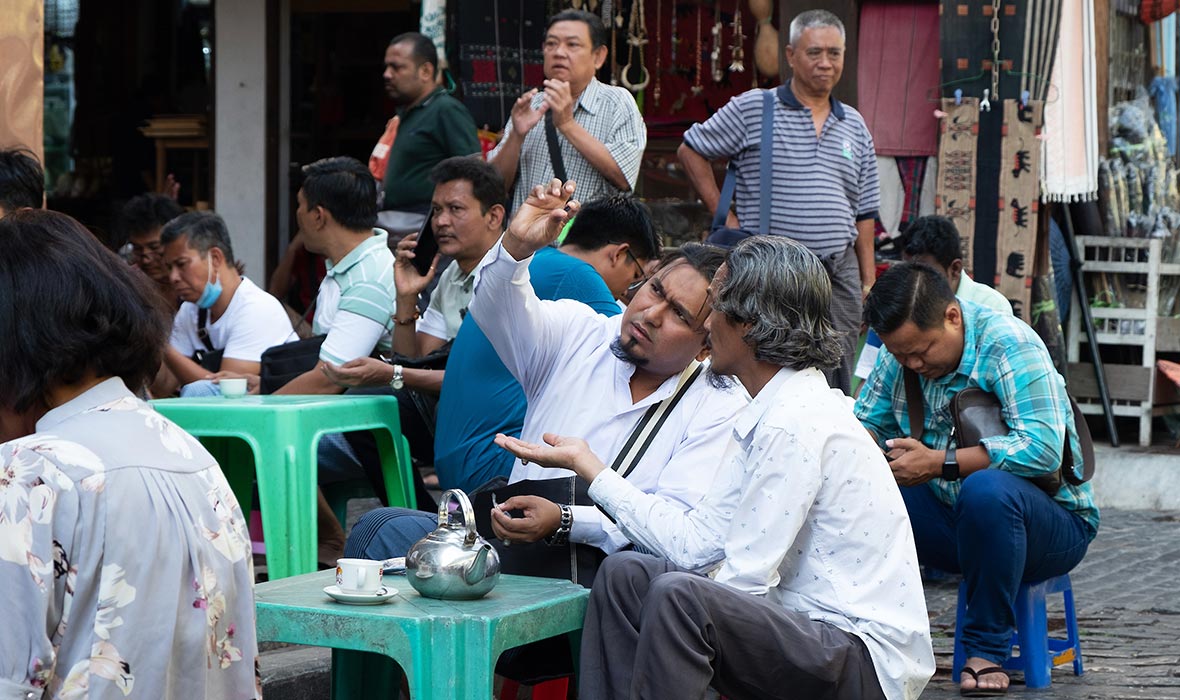
Like Batsa, many of these traders are originally from Mogok, Myanmar’s precious stone capital, but have moved to Yangon to deal to international customers. Known as the ‘Valley of Rubies’, between 80-90% of the world’s highest quality rubies are thought to be from the Mogok area, along with a huge range of other precious stones such as sapphires, spinel and peridot. While most of Myanmar’s multi-billion dollar gem trade is dominated by the military, insurgent groups and private Chinese companies, these small-time, local traders, who have worked with gems their whole lives, trade in cash on Shwe Bon Than Road and in the tea shops of Bogyoke Aung San Market.
The seller of this stone is standing some way up the street among another group of men, and we chat, waiting for Raj to return. My new-found friend, Karan Topali, another trader, whispers that this stone recently sold for less than Batsa’s offer. Nevertheless, the seller rejects the price and the action ends. Tea drinking resumes.
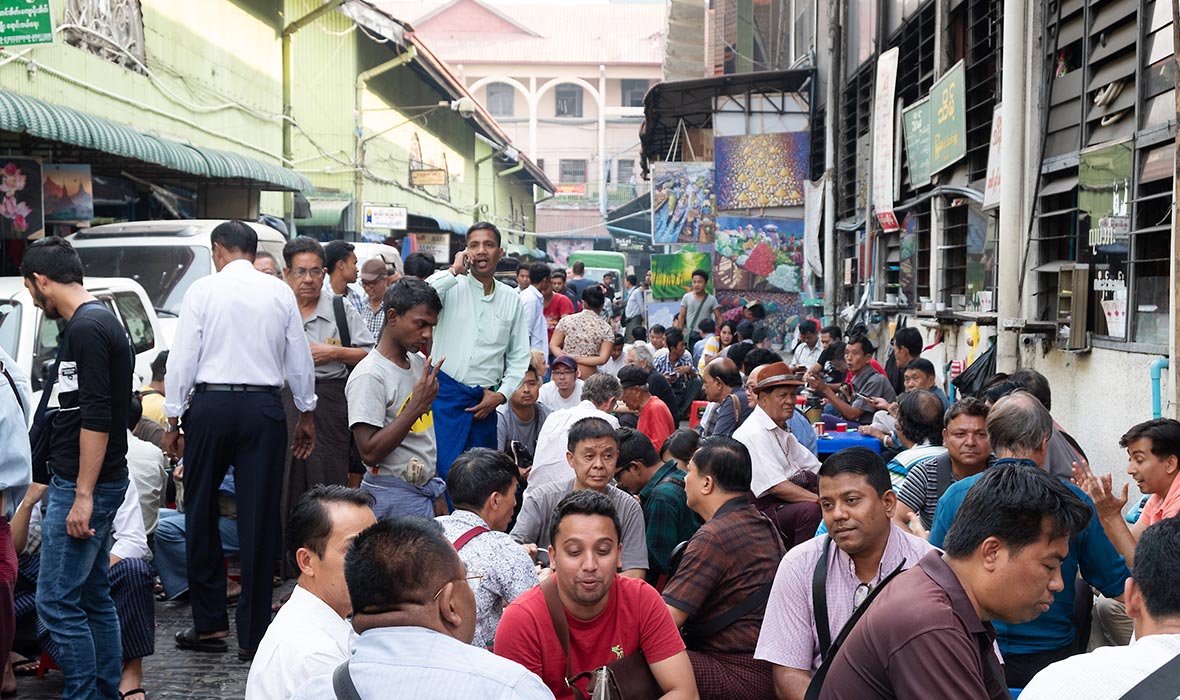
ABOVE: The bustling gem traders at the market.
Karan explains the small-time dealers, like himself, who buy and sell stones for a few hundred dollars a-piece, trade where we are standing now.
“They are the big men,” he says as he gestures to a smaller group standing very separately along the pavement. “They buy rubies and sapphires for $50k or $70k. They became very rich from selling big stones from Mogok twenty years ago and now they own multi-million pound properties in Yangon.”
This morning business appears quiet and Karan flicks through some obligatory photos of his family, and then of the town of Mogok. Around 200km north-east of Mandalay, the Mogok Stone Tract is one of the world’s oldest sources of fine rubies, with mining in this area dating back to at least the 6th century CE. The majority of Burmese precious stones come from here, with the ‘Burmese’ stamp giving them a significant premium over any others. Certain rubies found in Mogok have a darker, ‘pigeon-red’ color which is found highly desirable; the ‘Sunrise Ruby’, the most expensive colored gemstone ever sold at auction, sold for 30.33m USD, is one such stone.
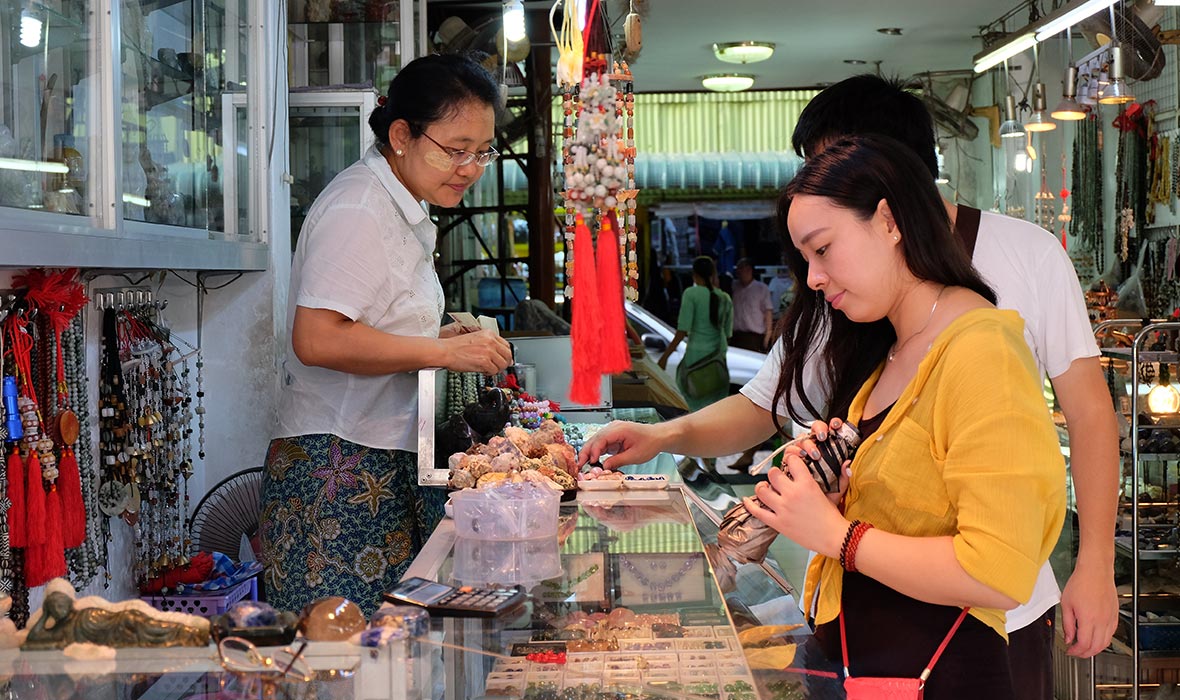
ABOVE: Inside one of Yangon’s many gem stalls.
Since the 16th century, successive rulers have amassed great wealth from the region. After a series of Burmese monarchs, extraction intensified under the British, following the 3rd Burmese-Anglo War. They granted a concession to London-based jeweler, Charles Streeter who formed the Burma Ruby Mines Ltd. This company was allocated the sole rights to mine using heavy machinery, although local miners were allowed to operate on a small-scale using their traditional techniques.
In 1963, the Myanmar Socialist government took control of swathes of land, with locals relegated to the role of providing poorly-paid labor. Since 1990, the ruling military junta entered into joint ventures with private individuals or companies, mainly Chinese, in a tangled web of corruption and opaque cashflows. In 2014, it was estimated that 60-80% of gemstones left the country undeclared. Following the 2015 election, the Aung San Suu Kyi-led government has been suspending new mining licenses while it attempts to reform the industry.
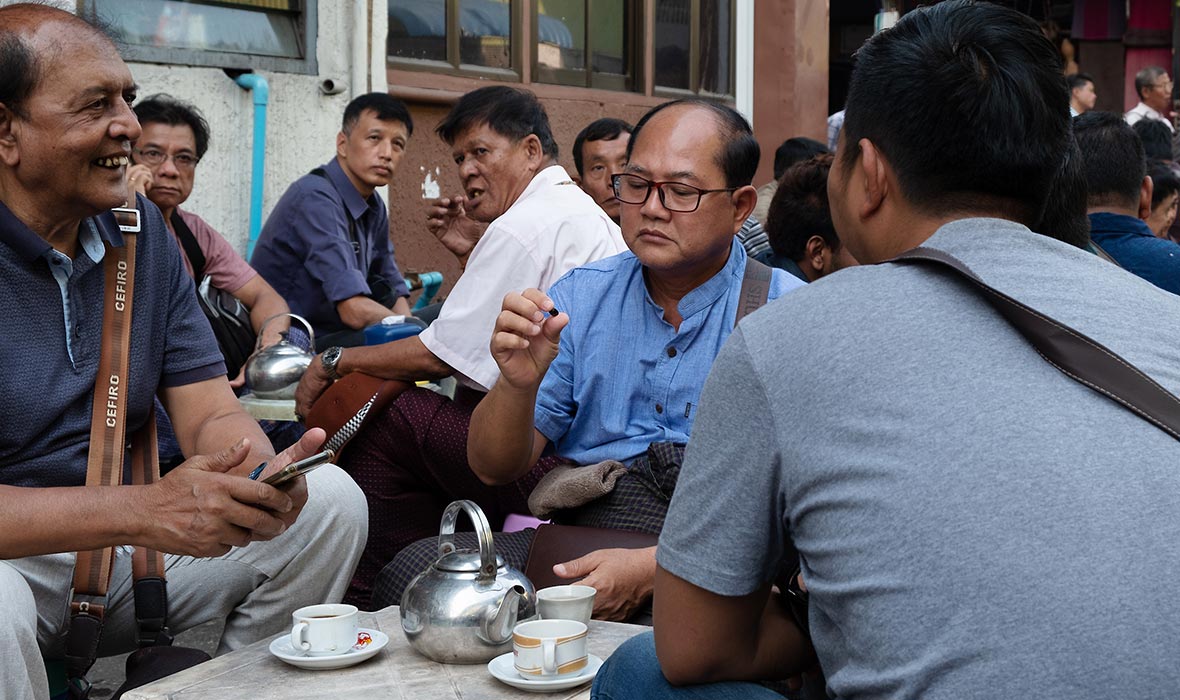
ABOVE: Inspecting a ruby.
Karan invites me along to observe the afternoon trading at Bogyoke Aung San market. Originally built by the British in 1826, the market in central Yangon has a cavernous inner hall, plus an outer building of shops. Between the central and outer buildings are cobbled lanes housing the cafes which also act as the Yangon gem seller’s office.
I quickly spot the sellers sitting in the shade on the small plastic chairs, clutching their side-bags. Inside these are wads of cash and smaller pouches, like small make-up bags, which hold the gem traders’ stones; there are different sections for rubies, sapphires, and so on.
A wave of whispers crosses the market as a potential buyer arrives, dressed in a crisp, white T-shirt and chinos, his watch encrusted with diamonds. The sellers swarm like flies, waiting their turn to push some gems in front of him. He spends a second examining each stone, shining his torch on them, before nonchalantly tossing them back to the side. No sales are made and everyone slopes off.
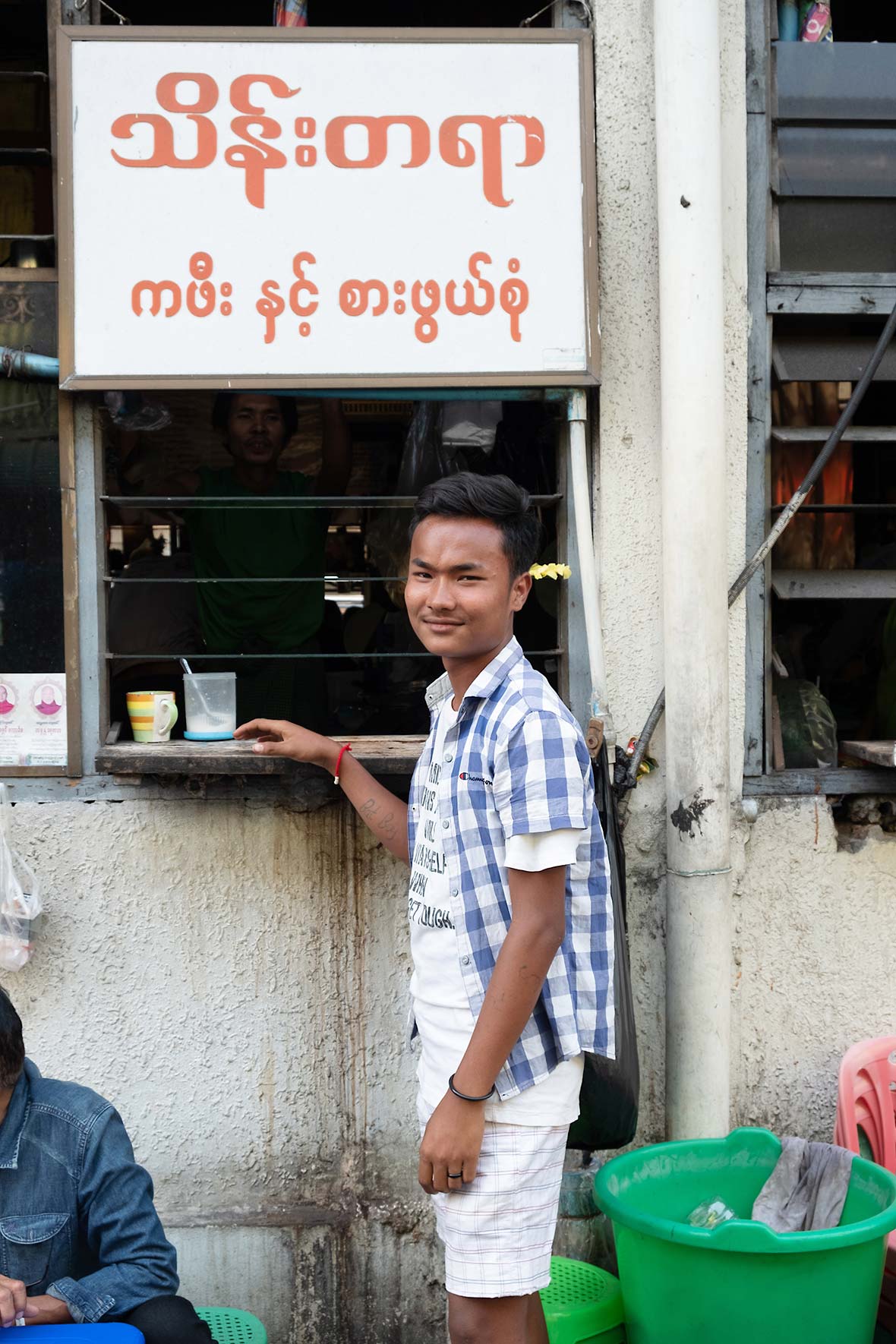
Over a cup of Burmese tea, I chat to Subash and Pavan, two 20-something Nepali-Burmans, who have just arrived in Yangon. They live in Mogok but come to Yangon to sell their supply of Mogok stones. They buy the stones ‘rough’, and only after cutting and polishing can they assess how much they can charge for them. “Buying stones in Mogok is easy,” says Subash. “But selling them is a bit more difficult. It takes time so we come for a month at a time. And people are being careful with their money just now, so it’s a little tough.”
I ask Subash if he is worried he will buy a fake stone and he shakes his head. “We have been doing this our whole lives. This is our skill!” he laughs. Karan however, is not as gung-ho as his younger counterpart. He tells me he regularly pays to get stones checked in a nearby laboratory to ensure they are real Burmese. “Nowadays there are definitely stones in this market that are not from Burma,” he says shaking his head. “It is really difficult to tell if a stone is truly Burmese or not.”
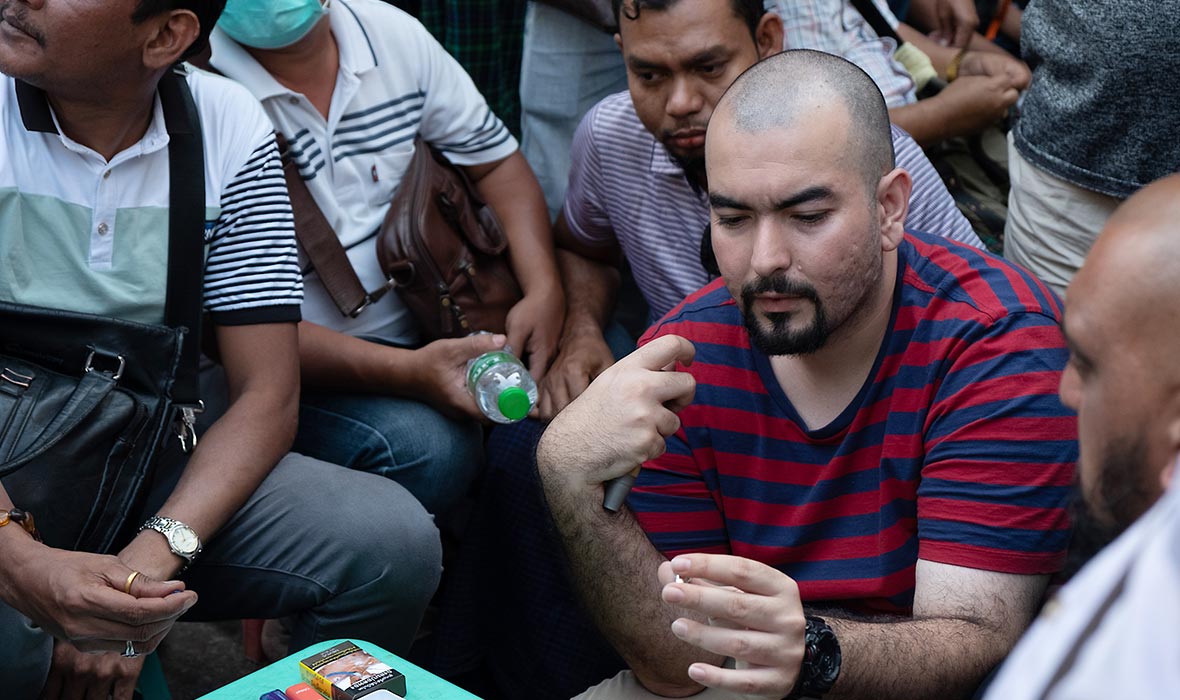
ABOVE: A foreigner inspecting a ruby in the market.
Today, Mogok is producing fewer higher-quality stones, and the ones that are there are harder to reach. Karan’s daughter, Shwe Zin Oo, who runs her own gemstone business, tells me about her childhood in Mogok. “When I was young, miners used to come to a huge cricket field to sell their stones. My mum would buy lots and, in the evenings, would separate them into piles of different qualities. I used to play with them, I was fascinated by the colurs. Things are not the same these days, the stones are not as plentiful.”
I return the next day and Karan points to an even larger crowd and whispers that a ‘foreigner’ has come, looking for sapphires. The traders are lining up to tip their blue stones onto the dish in front of him. But otherwise the market is quiet; the same faces are sitting in the same seats with the same people.
I bump into Subash and we discuss how much longer it might be before business picks up. He shrugs. “Life is not so bad. I can sit and chat with my friends, and drink tea. As long as I have enough to get by day-to-day,” he smiles, and orders the tea.

